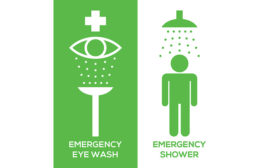Safety Technology
Technologies improve program, performance
Read More
Networked high-tech sensors to the rescue
Smart lighting and signage could provide emergency information in case of fire
February 7, 2019
How to get the best from your dropped objects prevention program
“Look out below!”
February 7, 2019
Curtain walls trap noise in pockets of protection
A solution for sonic attacks
February 7, 2019
Innovations in cut-resistant work gloves solve common problems
Cutting-edge answers
February 7, 2019
International Glove Association 2019 Glove Symposium
March 17-19, Green Valley Ranch, Henderson, NV
February 1, 2019
Never miss the latest news and trends driving the safety industry
eNewsletter | Website | eMagazine
JOIN TODAYCopyright ©2024. All Rights Reserved BNP Media.
Design, CMS, Hosting & Web Development :: ePublishing










